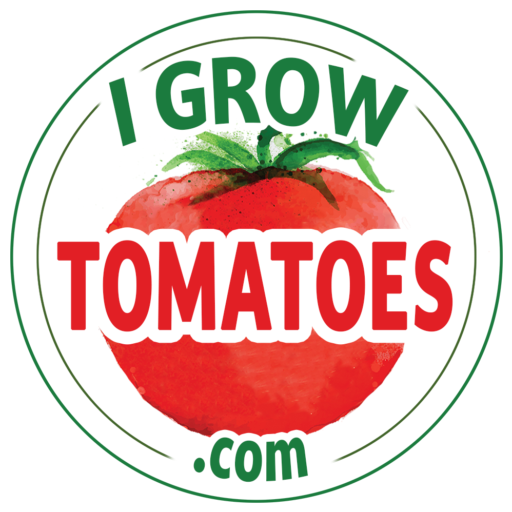One of the biggest secrets to growing strong and healthy tomato plants is to support your crop as early – as in right on the very day you plant them!
Tomatoes are a crop that can grow fast and furious. Because of that, they can quickly get out of hand before you know it. In fact, it’s not uncommon for some tomato varieties to reach upwards of 6 to 8 feet tall or more at full size – and without support from the start, that can cause big issues for plants – and for your harvest!
Without proper support, tomato plants are far more likely to have damage from broken branches and stems. They are also far more susceptible to disease. And if all that wasn’t enough, unsupported plants can get so unruly they can become nearly impossible to harvest.
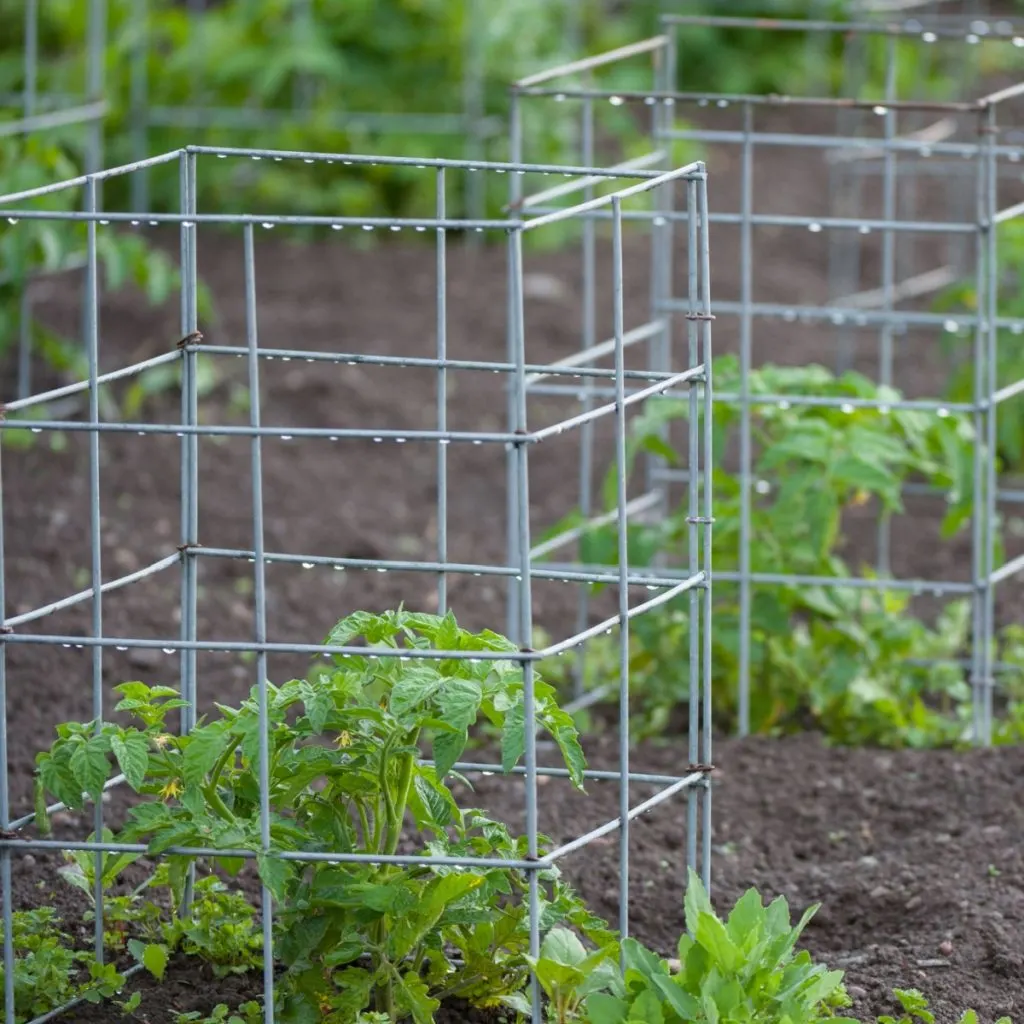
There is one quick and simple fix though that can eliminate all of those issues, and that’s adding good support right from the start. And as you will see below, it can solve so many issues that hinder the growth and productivity of tomato plants.
Here is a look at why to support tomato plants early – and the best ways to do it!
Why To Support Tomatoes Early
One of the biggest mistakes gardeners make is to wait until later to support their tomatoes. Failing to get your supports in on planting day can cause big issues for both you and your crop!
Preventing Root Damage
As tomato plants grow, they start to push out an impressive root system. These roots can grow around 3 feet deep as well as wide by the time plants fully mature.
Roots are vital for absorbing water and nutrients from the soil. They also help to sturdy and support tomato plants. If those roots get damaged, the plants have less of a chance of withstanding harsh weather conditions as well as the weight of mature tomatoes.
If you were to wait until a month or even just a couple of weeks after planting tomato transplants to insert your supports, you risk the chance of damaging those roots. By getting the supports in place right after planting, there is zero worry of causing root damage.
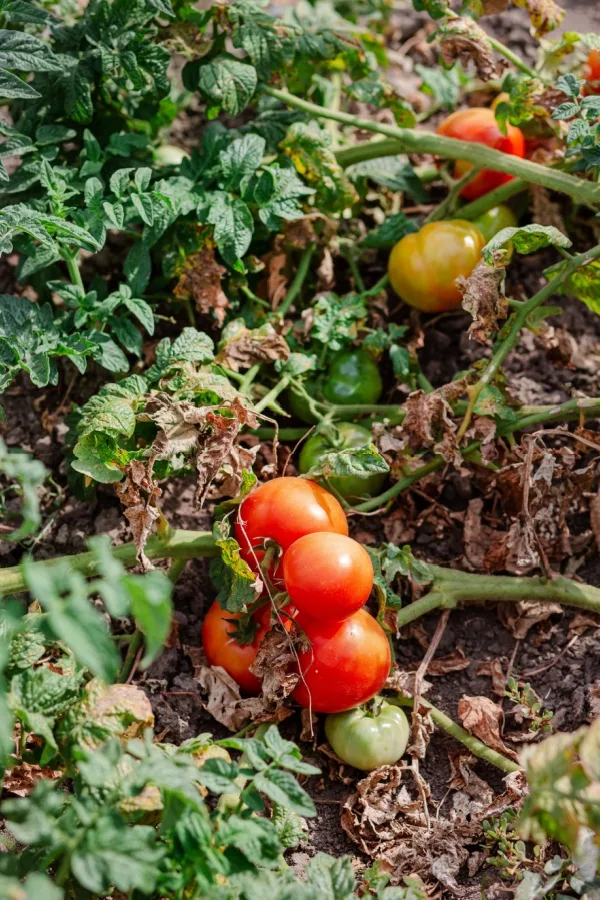
Reducing The Chance Of Disease And Pest Damage – Why To Support Tomato Plants Early
By adding supports to young tomatoes early, you are also helping to keep these vining plants up and off the soil, and that can play a major role in preventing both disease and pest damage.
There are many different diseases that affect tomatoes living in the soil. But if the tomato foliage is never allowed to touch the soil, those diseases have a much harder time infecting tomato plants.
Issues like early and late tomato blight can completely wipe out entire crops of tomatoes if not prevented. These diseases live in the soil for several years. And they can quickly take over young tomato plants when they have contact with the soil.
There’s also the issue of pests. Many different insects and pests enjoy dining on tomato plants. Not only are ripe tomatoes at risk but the lush green foliage is as well. If you allow plants to grow along the soil, pests such as slugs and snails have a much easier time finding and feasting on plants.
Protection From Storms
Another reason for adding supports at the time of transplanting is because young tomatoes are very fragile. Even after hardening off plants, they still are unable to withstand harsh conditions like heavy rains and winds. See, “How To Harden Off Your Tomato Plants Outside”
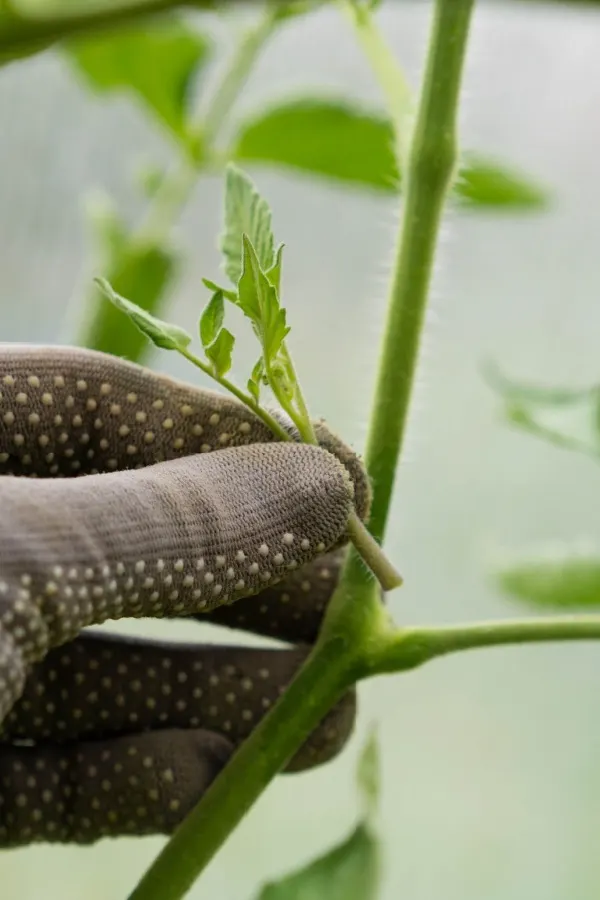
It doesn’t take much for young plants to sustain damage or snap completely from springtime or early summer storms. But putting supports in early can help prevent young plants from injury – and keep your plants on track for a big harvest.
Ease Of Maintenance – Why To Support Tomato Plants Early
Last but not least, getting supports for tomatoes in early also has some big advantages for the gardener as well.
Tomatoes are one of those crops that do much better if they are not watered overhead. If plants are lifted up off the soil with supports, you have a much easier time finding the base of each plant and therefore can water and apply fertilizers as needed.
The process of pruning is also easier when plants have support. You can easily see exactly what you need to remove and have no issue getting to the stems that need pruning.
And, once plants are mature and producing ripe fruit, supported plants are much easier to harvest from as well. It’s easy to see why it’s a win-win situation to get your tomato supports in as early as possible – for you and the plant!
How To Support Tomatoes
Let’s start by covering cylindrical tomato cages. While there are a wide variety of different commercial tomato cages to support tomato plants, they usually aren’t the best choice.
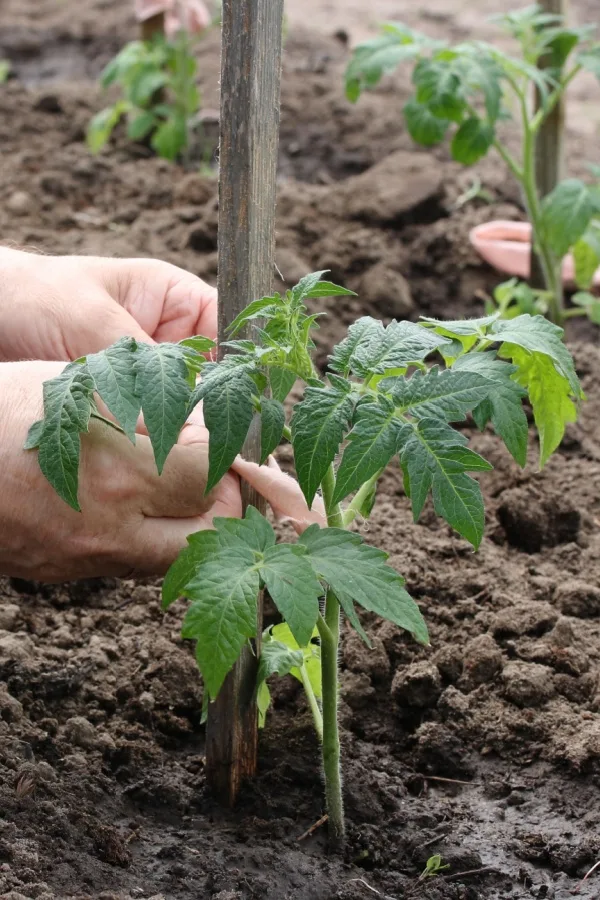
The issue is that most tomato cages are way too small and thin. They don’t do much good for towering mature tomato plants. In addition, tomato cages can start to get extremely expensive, especially if you need to purchase several at once.
True, the supports might work well in the first month or so. But as plants grow and start to produce heavy fruit, the cages quickly start to fail and can easily topple over by the littlest amount of wind or rain.
Using a single stake is another popular option for supporting tomato plants. However, their single point of contact usually isn’t enough to keep the multiple branches off the soil and prevent a mature tomato plant from toppling over – stake and all.
What To Use
So what do you use to support tomatoes? One of the best options is to use cattle / hog panels. A hog panel is a large rectangular sheet of criss-crossing thick galvanized wire strands welded together.
You can stake a single piece down along your growing row using two or three t-posts. You can then tie up multiple plants all along its length.
Its sturdiness combined with the multiple points of contact makes hog panels a perfect support for tomatoes. In addition, it also allows for easy harvesting.

Another similar option is to cut up a large hog panel into one to two-foot widths for each tomato plant. Attach each section to a t-post and you have a simple yet compact support that won’t break the bank (or your tomato plants as they grow!).
You can even create custom cages using cattle panels like in the first photo in this article. It does take a bit more materials, but the result is sturdy supports that you can create to fit the exact variety of tomatoes growing.
I Grow Tomatoes
Follow Our Facebook Page For Even More Great Tomato Growing Tips! I Grow Tomatoes Facebook Page
I Grow Tomatoes is a website created for those who love all things about tomatoes – from planting and growing – to cooking and canning! We publish two articles every week, 52 weeks a year. Sign up today to follow via email! This article may contain affiliate links.
